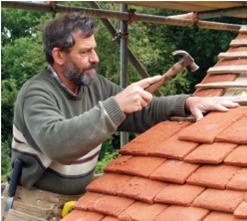It’s hard to overplay the UK’s museums; they are, by any standards, extraordinary. A combination of empire, industrialisation and recent investment means the UK has some of the finest and most international collections, most impressive museum buildings and most capable museum staff in the world. And the public responds, visiting museums in ever-increasing numbers – more than half of adults visited a museum last year. The national museums are brilliant, but it’s not only these largest museums and galleries that excel. The past months have been a whirlwind of museum visits for me (I tell my kids I get paid to visit museums) and I’ve been impressed by organisations of all shapes and sizes: Beamish, for example, an immersion in the northeast of the past, is animated by wonderful living history guides; the Museum of Natural History in Oxford, recently re-opened, holds an inspiring combination of classic displays dealing with contemporary issues; the new Mary Rose Museum is the closest you can come to stepping back into a single, fateful day in history; the Manchester Museum is constantly testing and probing practice in the museum sector with high quality thinking and display; or the Chiltern Open Air Museum, where half a dozen paid staff and 200 volunteers inspired me with their passion, knowledge and dedication.

Despite these success stories, these are challenging times for museums of course. The decline in local authority funding is hitting the sector exceptionally hard, and reductions in DCMS funding and individual disposable income don’t help. Most museums have reduced their staffing, many have changed their operating hours, and a few have closed.
So, what do the coming years look like for our wonderful museums? Mixed, inevitably. Public funding will continue to decline, so there will need to be an increase in funding from other sources – entry charges, commercial income, and philanthropy. Museums will need to balance public access with becoming increasingly ‘independent’ in their thinking, with staff taking on an ever more diverse range of functions. Museums will continue to be enormously popular, as experience and the ‘real thing’ are valued ever more within the context of an increasingly digital world. And the museums that prosper most will be those that have real clarity about their purpose – what exactly they are trying to achieve and for whom – and set about this purpose with passion.
As the sector changes, so the role of a development organisation and funder like Arts Council England needs to change. We need to be smarter with the limited funding available, focussing on supporting organisations that are making changes to become more resilient. We need to work more effectively with other funders, coordinating efforts and avoiding duplication. We have to make sure that we fund widely – supporting excellent work in organisations, no matter what their size or make up. We need to ensure that the UK’s extraordinary national museums are an integrated part of the wider museum ecology. And we need to be closely engaged with the sector – an organisation that listens more than it speaks.
Arts Council England has just announced the recipients of funding from two important funding streams – the Strategic Support Fund and the Designation Development Fund. More than one hundred museums will receive funding, as well as several important national initiatives led by organisations like the Museums Association and the International Council of Museums UK. Projects vary from the digitising of important archives (Culture Coventry), to the conservation of a monumental cartoon (Royal Academy of Arts), to the improvement of visitor engagement (Manchester Museum).
Next Round
Plans are now well advanced for the Arts Council’s total investment approach to museums for 2015-18. Around £21.5 million a year will fund a network of Major Partner Museums that will play an important leadership role in the sector, supporting networks and training regionally and across England. An open application fund of £10 million a year will focus on supporting resilience and workforce development and will be available to a wide range of museums and cross-sector organisations. Museum development will continue to be funded, ensuring a network of advice and support for all museums, whilst commissioned funds will also be used to focus on strategic priorities that include national-regional partnerships, digital, and working internationally. Accreditation and Designation will continue to underpin Arts Council’s work with museums. Funding will be available right across England, for a wide range of museums, and around 90% of that is likely to be distributed outside London.
Arts Council England wants to be as accessible as possible, through me and through our network of relationship managers across the country. I can be contacted at: @johnornao via Twitter or email me.
This article originally appeared in the Spring edition of Museums & Heritage Magazine.
Back to top




